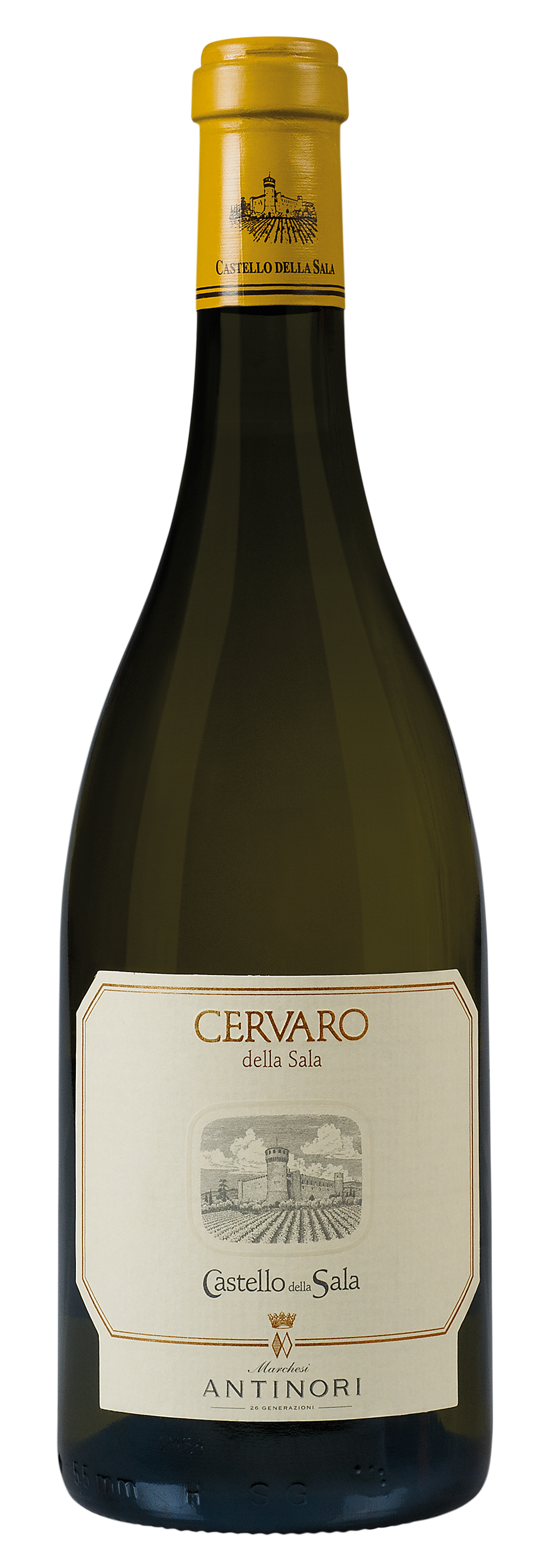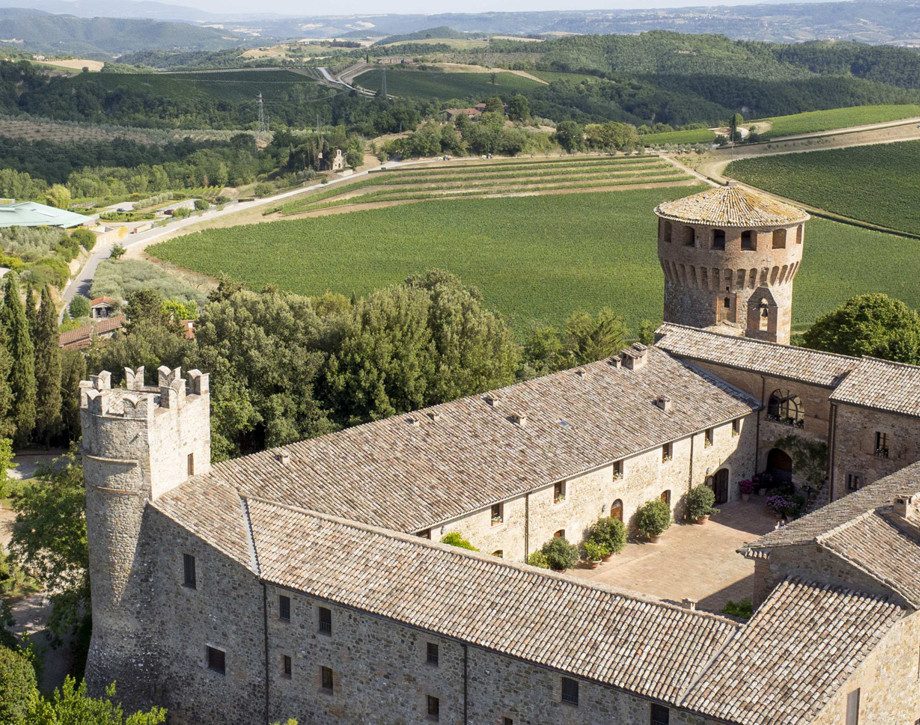Cervaro della Sala 2020
Climate
The 2020 growing season will be remembered for dry weather conditions. Winter saw virtually no rainfall and temperatures were never too extreme nor severe. Spring arrived slightly later than in previous years and was dominated by mild daytime weather and temperatures above seasonal averages, except for several cool spells at the beginning of April. From June to Ferragosto (August 15th), hot, dry conditions brought the grapes to full maturity earlier than usual. Peak harvest time was a carefully chosen decision based on obtaining the fruit’s finest expression. Harvesting of Chardonnay for Cervaro della Sala began at the end of August with healthy, perfectly ripe fruit possessing excellent freshness and an exceptional aromatic profile. Grechetto was harvested fifteen days later towards mid-September.
Vinification
The vinification cellar was designed to take full advantage of gravity flow; a concept that allows us to handle the harvested berries and fermentation processes as gently as possible without the use of mechanical pumps. The grapes are harvested in the early morning hours to preserve the purity of the fruit and protect it from elevated daytime temperatures. The must, which has undergone maceration on the skins at a temperature of 10 °C (50 °F) for about 4 hours, is first transferred by gravity flow into tanks for decantation and clarification, then transferred into barriques where alcoholic fermentation takes place followed by malolactic fermentation. In February, Chardonnay is ready to be transferred back into stainless steel vats and blended with Grechetto, which was fermented separately and did not age in oak. Subsequently, Cervaro della Sala aged in the bottle for several months in Castello della Sala’s historic cellars before being released for sale.
Tasting Notes
Cervaro della Sala 2020 is straw yellow in color with greenish highlights. Its nose is complex with intense notes of citrus fruit, acacia blossoms that blend with hints of vanilla. A rich, mineral palate offers light notes of hazelnut butter. Lengthy and persistent, Cervaro della Sala 2020 has remarkable aging potential.

The Wine
The name Cervaro comes from the noble family that owned Castello della Sala during the 14th century, Monaldeschi della Cervara. A blend of Chardonnay grapes and a small quantity of Grechetto make a wine that can age over time and represent the elegance and complexity of this unique estate. Cervaro della Sala is one of the first Italian white wines to have malolactic fermentation and aging take place in barriques. The first vintage of Cervaro to be produced was the 1985 vintage.

In Honor of the Monaldeschi della Cervara Family
The wine’s name honors the Monaldeschi della Cervara family who was the historic owner of Castello della Sala in the XVI century.
The Barrique
Cervaro della Sala was one of the first Italian white wines to have malolactic fermentation and aging take place in barriques.
The Concept
The idea behind Cervaro della Sala was to craft a white wine able to age over time.
The Enologist
In 1985, Renzo Cotarella, who was chief enologist at Castello della Sala at that time, made the first vintage of Cervaro della Sala.
Climate
The 2022 growing season in Orvieto began with warmer temperatures and dry conditions during both winter and spring. The month of June saw no precipitation and registered several heat spikes. Despite these climatic conditions, the vines did not suffer drought stress due to existing pedoclimatic conditions in Castello della Sala’s vineyards. Rain showers at the beginning of August revitalized both the vines and fruit allowing the grapes to reach optimal ripeness. This year’s dry weather ensured perfectly whole, healthy berries, minimized vineyard maintenance, and produced well-balanced, healthy fruit with a good aromatic profile. Harvesting activities of Chardonnay for Cervaro della Sala, which was of exceptional quality, got underway the third week of August. The grapes were fully mature, with outstanding freshness and had an excellent aromatic profile. Grechetto was harvested three weeks later, towards mid-September.
Vinification
The vinification cellar was designed to take full advantage of gravity flow; a concept that allows us to handle the harvested berries and fermentation processes as gently as possible without the use of mechanical pumps. The grapes are harvested in the early morning hours to preserve the purity of the fruit and protect it from elevated daytime temperatures. The must, which has undergone maceration on the skins at a temperature of 10 °C (50 °F) for about four hours, is first transferred by gravity flow into tanks for decantation and clarification, then transferred into barriques where alcoholic fermentation takes place followed by partial malolactic fermentation. In February, Chardonnay is ready to be transferred back into stainless steel vats and blended with Grechetto, which was fermented separately and did not age in oak. Afterwards, Cervaro della Sala aged in the bottle for several months in Castello della Sala’s historic cellars before being released for sale.
Historical Data
The name Cervaro comes from the noble family that owned Castello della Sala during the 14th century, Monaldeschi della Cervara. A blend of Chardonnay grapes and a small quantity of Grechetto make a wine that can age over time and represent the elegance and complexity of this unique estate. Cervaro della Sala is one of the first Italian wines to have malolactic fermentation and aging take place in barriques. The first vintage of Cervaro to be produced was the 1985 vintage.
Tasting Notes
Cervaro della Sala 2022 is a light straw yellow in color with greenish hues. The nose presents slight smoky notes of cedar and flint followed by floral hints of Spanish broom and mimosa blossoms. The palate is vibrant, fresh characterized by notes of vanilla, lemon butter and small pastries. Cervaro della Sala has outstanding aging potential but can be enjoyed immediately.

Castello della Sala
Castello della Sala is located in the Umbria region, not far from the Tuscan border, about 18 kilometers from the historic city of Orvieto. The Medieval castle’s property extends over an area of 600 hectares (1482 acres), 229 hectares (495 acres) are planted with vineyards at an altitude that varies between 220 and 470 meters above sea level (722/1541 feet) on the gently rolling hillsides that characterize the beautiful countryside in this area. Castello della Sala is the perfect place for growing white varieties. The vines grow in clay and calcareous based soils, rich in fossil shells, and they are well exposed to the rising of the sun with an excellent difference of temperature between day and night. The one exception to the rule is Pinot Noir, the only red variety that has found in this area ideal growing conditions to best express its full potential.

Soil
Originating in the Pliocene period, rich in marine fossils with veins of clay.


















